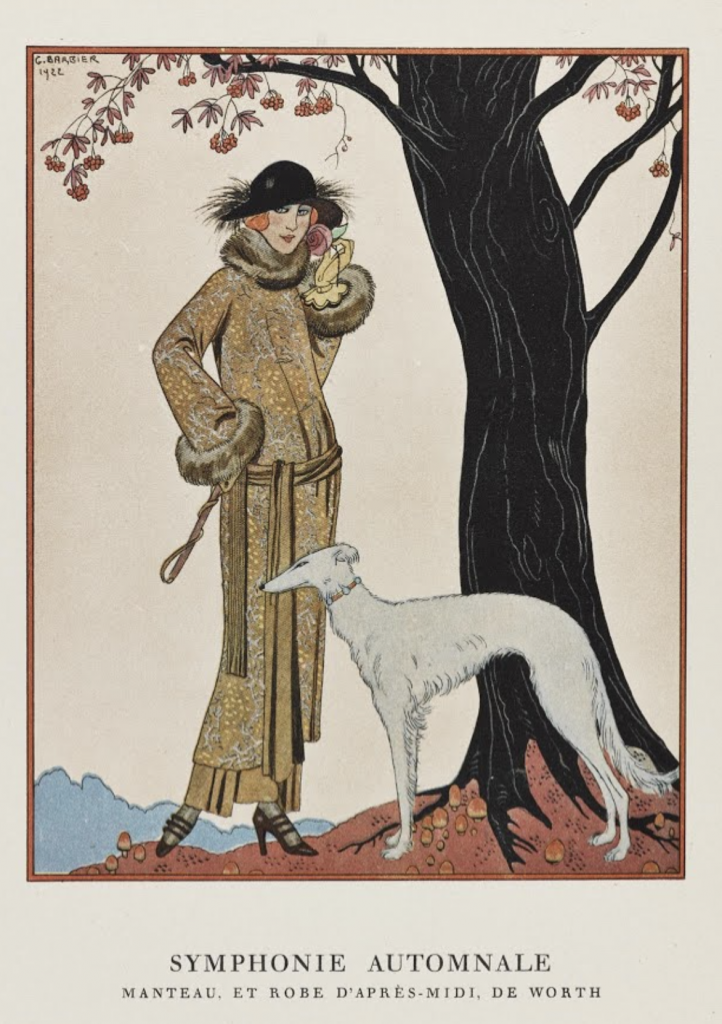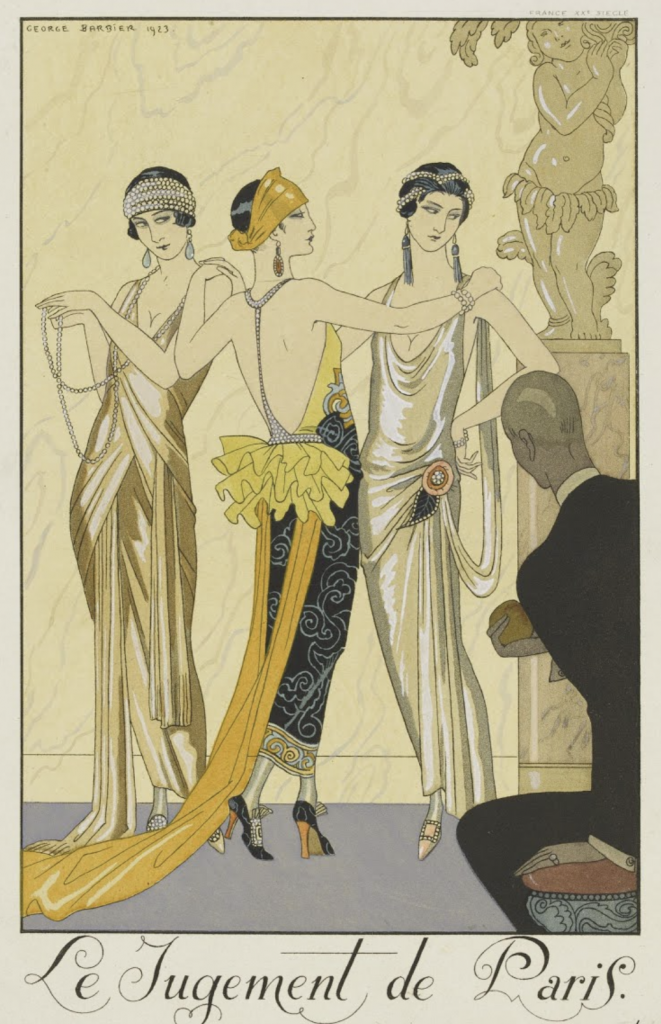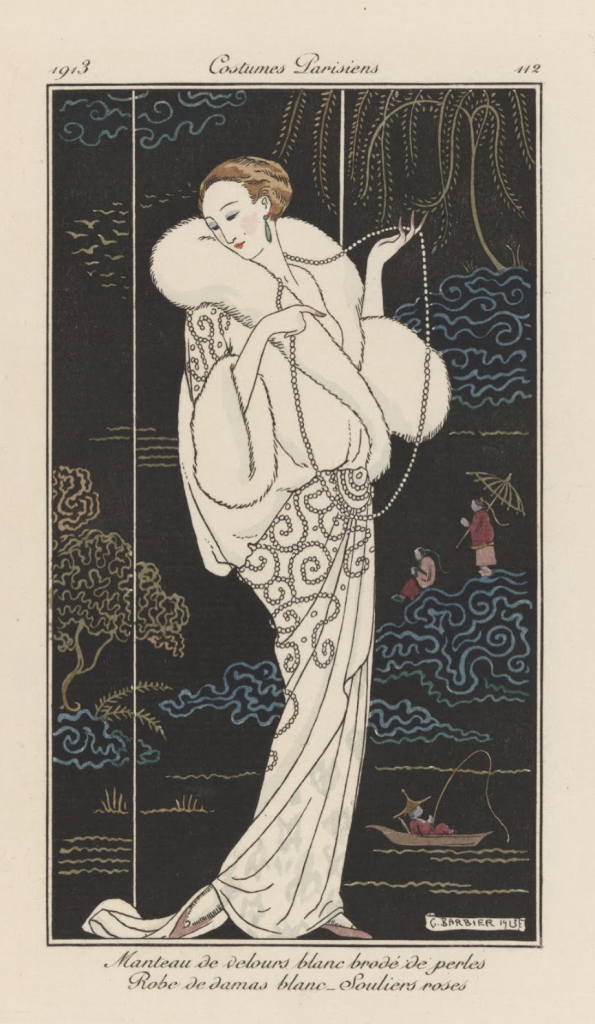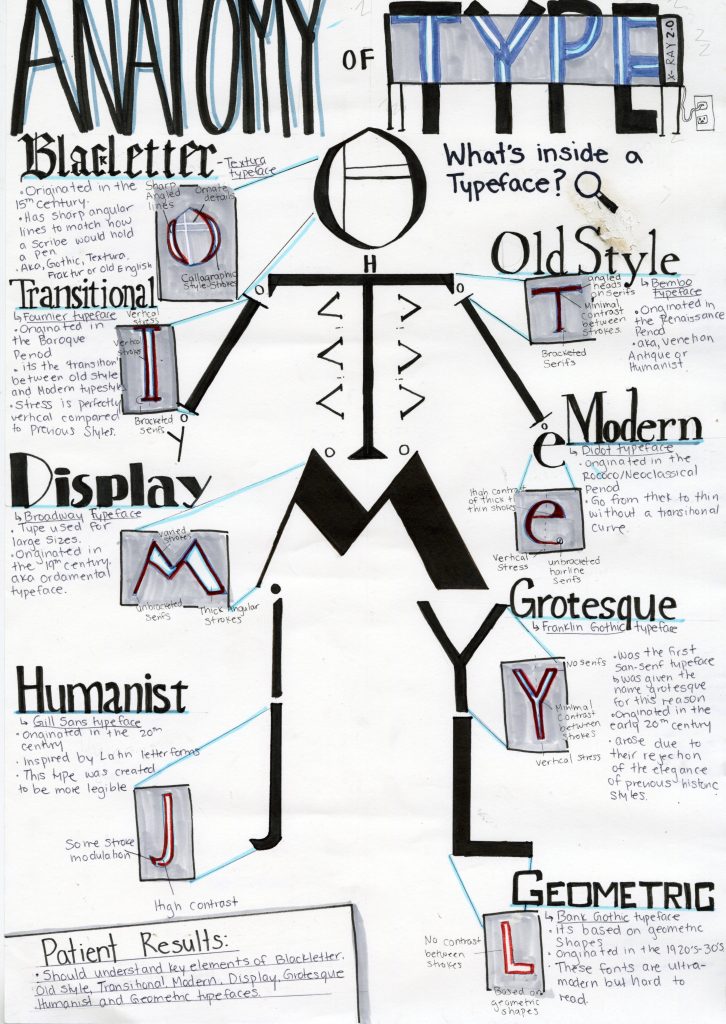For the final blog post of this year, I decided to write on one of my favorite artists Takato Yamamoto.
Takato Yamamoto was born on January 15th, 1960 in Japan. There is little information on his personal life online. He graduated from Tokyo Zokei University with a degree in painting (Wikiart). His work is strongly influenced by the Japanese ukiyo-e style. After working with the ukiyo-e style for some time he created “Heisei estheticism”. Heisei estheticism was a term he coined himself to describe his personal style. It blends Japanese ukiyo-e prints, Japanese pop-art, and western gothic art (Asia Contemporary art). After developing his signature style he had his first exhibition in 1998 titled “Heisei Esthetics”. His work has been used to illustrate many books and he’s had many personal shows. This is pretty much all the information on Yamamoto’s personal life but I think his work speaks for itself. It’s dark, and often has themes of rebirth, metamorphosis, brutality, death, and eroticism. His work is extremely detailed and he’s able to create intense narratives in his work. Often they reveal a scene just before a brutal event, it is almost a premonition of what’s to come. It’s seductive and makes you want to look at it even though you feel like you shouldn’t. He creates a variety of subjects in his work but it ranges from soft-brutality to complete brutality being depicted in scenes. He’s done hundreds of illustrations and I love looking through his work. Even though he’s done so many pieces his work isn’t repetitive, each piece still tells its own story. Below are a few of my favorite pieces:
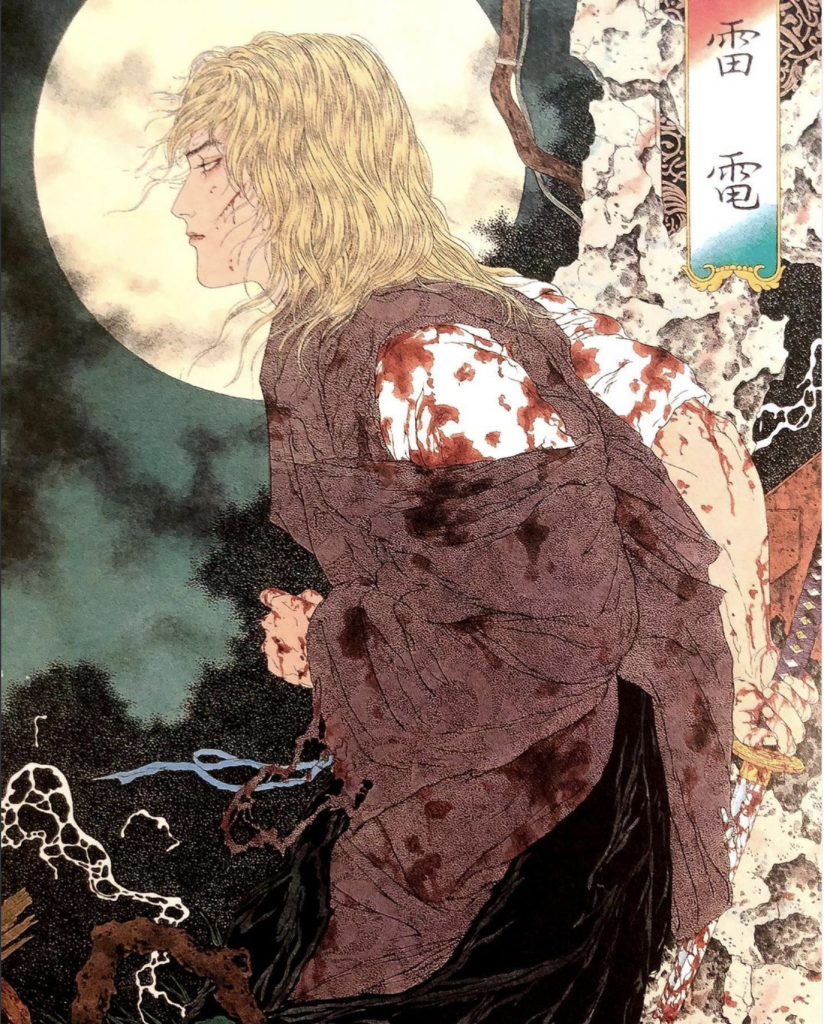


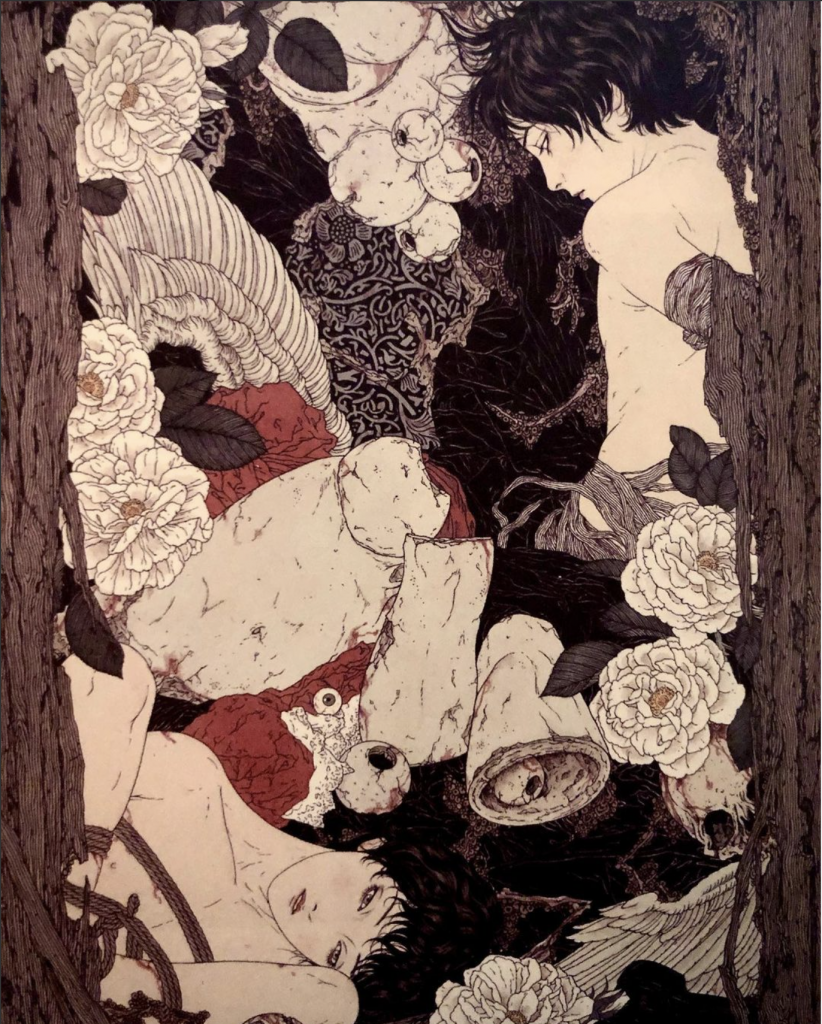
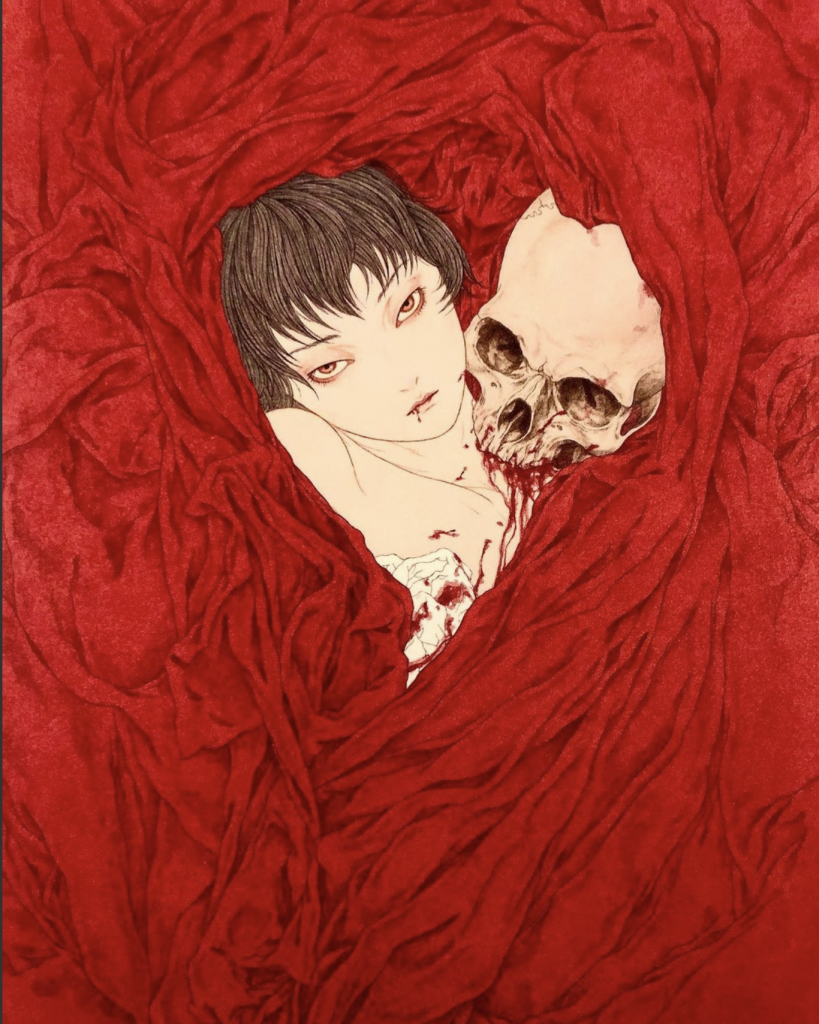
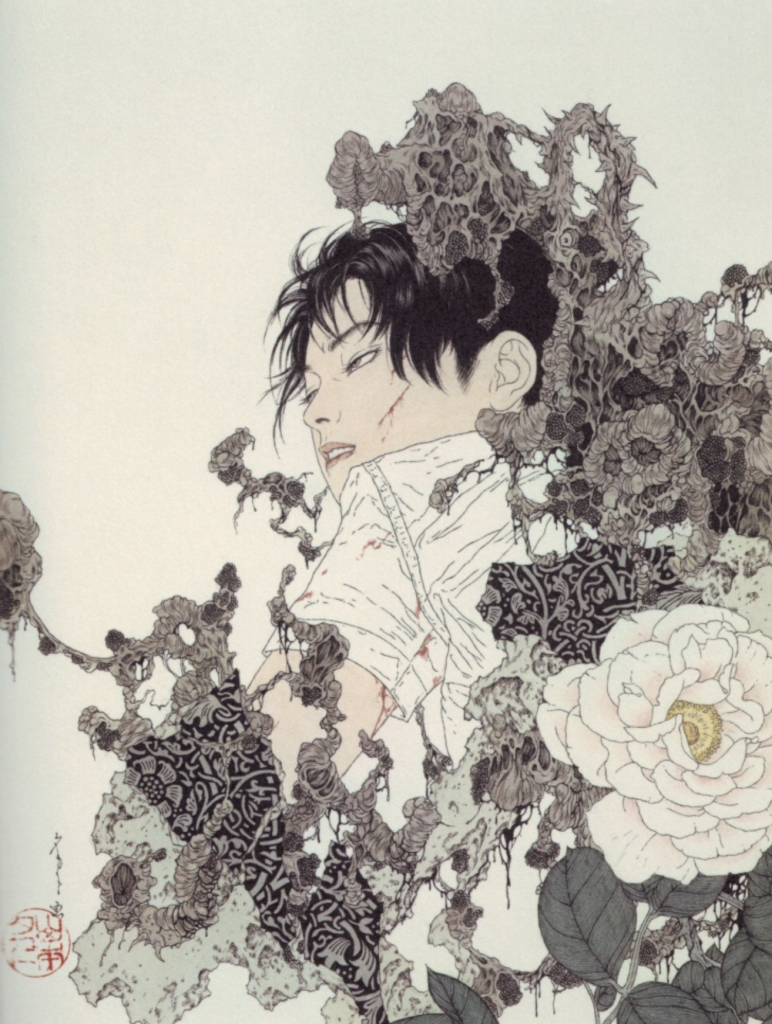
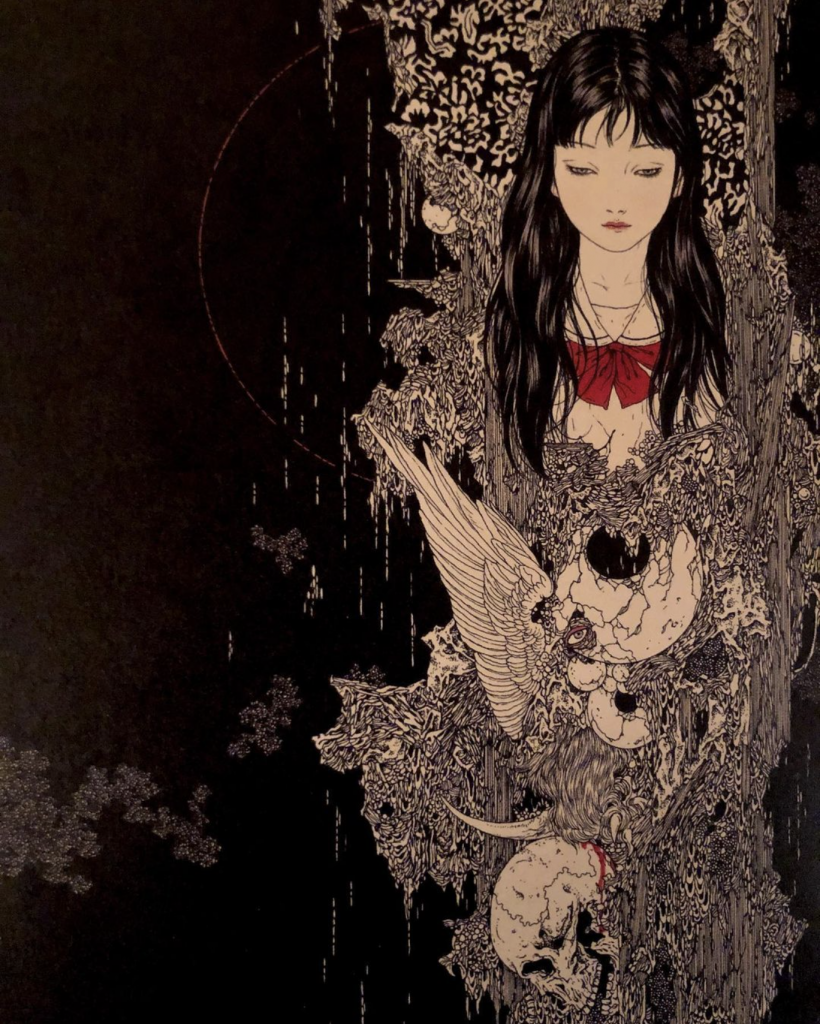
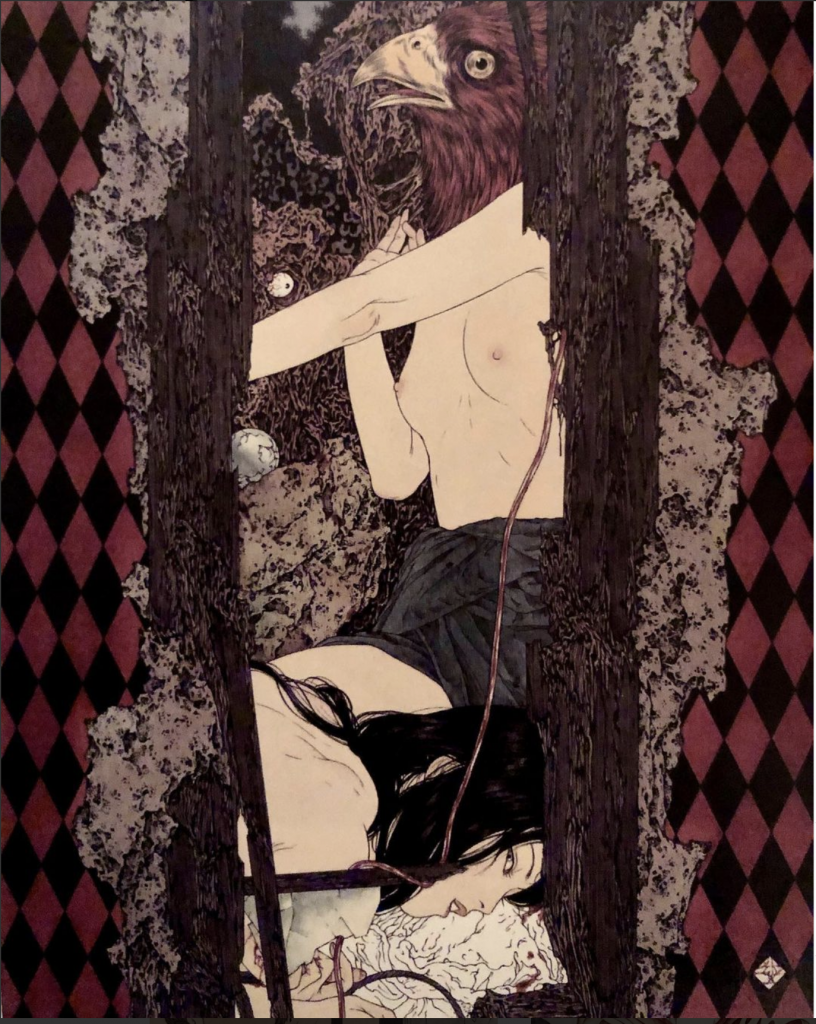
Works cited:
Asia Contempoaty Art. 2021. [online] Available at: <https://www.asiacontemporaryart.com/artists/artist/Takato_Yamamoto/en/> [Accessed 15 December 2021].
Wikiart. 2021. Takato Yamamoto – 33 artworks – illustration. [online] Available at: <https://www.wikiart.org/en/takato-yamamoto> [Accessed 15 December 2021].
Images from:
Takato Yamamoto, The Heisei Esthiticism style
